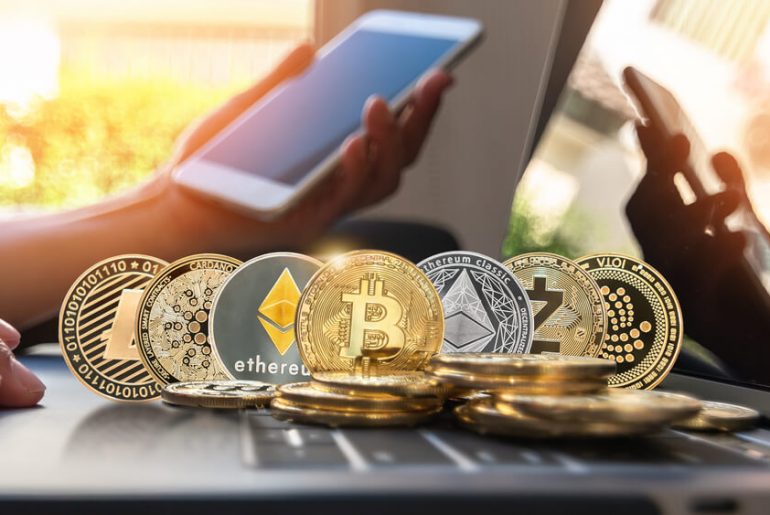Cryptocurrencies have become one of the hottest topics in the world of finance over the past few years. Some consider it a revolution in the realm of financial transactions and operations, while others see only risks and potential threats. How can you avoid cryptocurrency fraud and maximize the benefits of using them? This question is crucial for millions of people interested in the currency of the future.
In this article, we will explore how to recognize cryptocurrency fraud, how to avoid it, and provide examples of well-known cryptocurrency scams.
Cryptocurrencies and Their Characteristics
Cryptocurrencies are decentralized digital currencies that use blockchain technology to protect against fraud and ensure transaction security. One of the key features of cryptocurrency is that it is not controlled by central banks. Cryptocurrency has gained significant popularity among investors looking for high returns. It’s no surprise that scammers have taken an interest in the crypto space.
How to Recognize Cryptocurrency Fraud
Fake ICOs (Initial Coin Offerings)
ICO, which stands for Initial Coin Offering, is a method of raising funds for cryptocurrency startups by issuing new coins or tokens. However, there are numerous fake ICOs that ask investors to put their money into deceptive projects. Typically, scammers create a startup’s website and offer tokens for purchase before they are listed on an exchange, promising high returns. But once they attract enough investors, the website disappears, along with the funds of deceived investors.

How to Protect Yourself from ICO Scams
Exercise extreme caution when choosing an ICO to invest in, and carefully analyze the project’s fundamentals. Conduct a manual check of the company before investing to ensure it’s a legitimate startup. Check if the startup has active communities on social media, assess their reputation, look for a roadmap, and see what leading media outlets say about the startup. However, even if a startup is well-known and popular among investors, it does not guarantee 100% investment safety.
Scam Tokens
Token fraud is a common issue in the cryptocurrency world. Tokens are digital assets that represent a balance in an asset or provide access to services within a crypto project, rather than serving as a medium of exchange. In some cases, tokens can be analogs of securities, such as stocks or bonds.
Token fraud is even more prevalent because creating them does not require launching a blockchain of their own. Tokens can be created on existing platforms, such as Ethereum, which supports standards like ERC20, ERC23, ERC721, ERC1155, and others. As you can imagine, scammers gladly take advantage of this simplicity in token creation and the lack of oversight.
How to Check Tokens for Scams
If you want to verify a token that operates on the Ethereum network, you can use the Etherscan service. Simply enter the token’s name in the search bar on the main page and start your search. You’ll be able to find the addresses of major holders, view all transactions made, and determine if the token’s code is secure.
If the token has not undergone verification, it could be a sign of fraud. Typically, scammers do not disclose information about their tokens to avoid quick exposure. There are also other tools for checking tokens, such as BscScan for tokens on the BNB network, Smell Test for automatic coin verification in the crypto market, and DEXtools for real-time cryptocurrency market monitoring and token price determination through transaction tracking.

Phishing Websites and Emails
Scammers create phishing websites and send emails that mimic messages from trusted sources, such as wallets and exchanges. The aim of this fraud is to gain access to your personal information or cryptocurrency assets.
A phishing website is a site created by malicious actors to obtain users’ personal information, such as passwords, credit card numbers, and other confidential data. Phishing websites often appear to be genuine sites but have some differences in the URL or page design.
How to Verify Website Authenticity:
- Check the URL: Ensure that the URL starts with “https” instead of “http.” This indicates that the connection is secured with an SSL certificate.
- Verify the certificate: Click on the padlock icon next to the browser’s address bar and select “View Certificate.” Confirm that the domain name on the certificate matches the domain name of the website.
- Check the certificate chain: Make sure the certificate chain is valid and does not contain errors.
- Use security-checking tools: Many browsers provide security-checking tools for websites. For example, Google Chrome has a Safe Browsing feature that warns you about potentially dangerous sites.
- Utilize antivirus software: Most antivirus programs have a website security-checking feature. Ensure that your antivirus software is up-to-date and functioning correctly.
Overall, if you are unsure about the authenticity of a website or receive suspicious requests for personal information, it’s best to steer clear.
Fake Wallets and Exchanges
Scammers can create fake wallets and exchanges that appear identical to genuine ones. The aim of this fraud is to steal your assets.
How to Verify the Authenticity of a Cryptocurrency Wallet or Exchange:
- Domain name: Ensure that it matches the official website of the service.
- SSL certificate: Confirm that the website has an SSL certificate and the address begins with “https.”
- Reputation: Take the time to check what the internet says about the service.
- Licenses: Verify if the service holds the necessary licenses to provide its services.
- Use two-factor authentication to protect your account.
- Install only official applications from trusted sources (App Store or Google Play).
- Never send your personal information or funds to unknown addresses.
- Never trust links from emails or social media messages—always visit websites through your browser.
- If you notice suspicious activity on your account, contact the service’s support immediately.
- Be cautious and do not trust unfamiliar individuals offering assistance with cryptocurrency services—it could be a scam.

Scam Blacklist
There are already thousands of cryptocurrency exchanges in the scam blacklist, and this list continues to grow. Therefore, before using any exchange, research it online. There are numerous resources available for this. Yes, it may take 30 precious minutes of your time, but it will save you money.
When it comes to cryptocurrencies, the blacklist of scam coins is not updated as frequently but can be extensive.
Typically, cryptocurrency scams involve Ponzi schemes—financial pyramids where the funds from new investors are used to pay previous ones. Remember “MMM”? It’s the same concept but with cryptocurrencies.
Examples of Cryptocurrency Scams:
1. OneCoin: One of the largest cryptocurrency scams in history. Founders deceived people worldwide by encouraging them to invest their savings in a fake currency. They argued that OneCoin was safer than other cryptocurrencies, but it turned out to be a massive fraud. The Times labeled OneCoin as one of the largest scams in history. The U.S. prosecutors claimed that the creators of this fraudulent scheme earned approximately $4 billion.
2. Bitconnect: A platform that promised high returns but turned out to be a classic Ponzi scheme. The company promised substantial profits to investors but disappeared after collecting significant investments.
3. PlusToken: A mobile app that promised high returns but turned out to be a massive financial pyramid scheme. According to its creators, the app offered the use of universal blockchain technology. The total value of cryptocurrencies obtained by PlusToken is estimated at nearly $3 billion.
4. Dekado Coin: This project promised 40-70% monthly returns, but when the user base grew, the website stopped working. The financial pyramid collapsed, and people could no longer access their accounts on the site.
5. Regal Coin: During the Bitconnect scam, Michael James and Raymond Vel launched a similar scheme, promising up to 50% monthly returns to future Regal Coin token holders. The cryptocurrency was listed on several exchanges, but its value plummeted from nearly $70 in October 2017 to $0.005 in 2019. The coin ceased to exist in September 2019.
6. GainBitcoin: In 2016, this project appeared in India as a cloud mining solution, promising a 10% monthly profit for 18 months. The project attracted at least $300 million in investments from Indian investors. In 2017, it became clear that there was no mining equipment or mining operations behind the scheme. The entire project was a fake.
7. Morris Coin: According to the police, scammers received at least 15,000 Indian rupees from each of the 11,000 investors. Morris Coin promised a daily income of 270 Indian rupees for each 15,000 rupee investment, along with 10-40% rewards for successful referrals. In 2020, the organizers were arrested, and Morris Coin was recognized as a Ponzi scheme.
8. Mining Max: Founders proposed participation in a multi-cryptocurrency mining ecosystem that could yield high profits for investors. Like any other Ponzi crypto scheme, the majority of the business model relied on extensive marketing campaigns to attract new investments.
9. Ether Trade Asia Scam: Scammers posed as a cryptocurrency trading platform, offering a daily profit of 3% on investments. However, every time a trader tried to withdraw their tokens, the platform claimed “technical issues.” The website didn’t even disclose a physical address for any company or an email address for contact.
10. Forsage: Since January 2020, the project has attracted a minimum of $300 million. The Philippines’ Securities and Exchange Commission suspected the project of using Ponzi schemes, and they were correct.

Conclusion
What can I say? I won’t reveal any groundbreaking insights by stating that you must be vigilant and cautious. Yes, using cryptocurrencies involves risks, but if you do everything wisely, you can earn well in crypto. I hope you never encounter a scam on your investment journey, and if an unpleasant encounter does happen, you can recognize the fraudsters in time.





